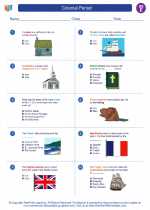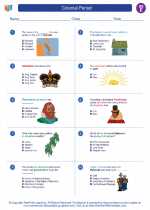Washington: The Evergreen State
Washington is a state in the Pacific Northwest region of the United States. It is named after the first President of the United States, George Washington. The state is known for its diverse geography, ranging from the lush forests of the Olympic Peninsula to the high desert of the east. Washington is also home to the iconic Mount Rainier, which is an active stratovolcano and the highest peak in the state.
History of Washington
Before European exploration and settlement, the area that is now Washington state was inhabited by numerous Native American tribes, including the Chinook, Salish, and Makah. The region was first explored by Spanish and British navigators in the 18th century. In the early 19th century, the Oregon Country, which included present-day Washington, was jointly occupied by the United States and Great Britain. In 1846, the Oregon Treaty established the 49th parallel as the boundary between the United States and British North America, leading to the eventual creation of the Washington Territory in 1853. Washington was admitted to the Union as the 42nd state in 1889.
Government and Economy
Washington's capital city is Olympia, and its largest city is Seattle, which is known for its thriving tech industry and as the birthplace of companies like Microsoft and Amazon. The state's economy is also driven by its robust agriculture, particularly the production of apples, cherries, and hops. Additionally, Washington is a major producer of hydroelectric power, thanks to the abundance of rivers and dams in the region. The state is known for its progressive politics and has been a leader in environmental conservation and LGBTQ+ rights.
Points of Interest
Washington is home to a variety of natural and cultural attractions. Visitors can explore the stunning landscapes of Olympic National Park, go whale watching in the Puget Sound, or visit the historic Pike Place Market in Seattle. The state is also renowned for its wineries and breweries, particularly in the Yakima Valley and Walla Walla regions. For those interested in history, the Museum of History and Industry in Seattle and the Fort Vancouver National Historic Site offer insights into the state's past.
Study Guide
- What is the capital of Washington?
- Which mountain is the highest peak in Washington?
- When was Washington admitted to the Union?
- What are some of the key industries driving Washington's economy?
- Name one natural attraction in Washington that visitors can explore.
[Washington] Related Worksheets and Study Guides:
.◂Social Studies Worksheets and Study Guides Fifth Grade. Colonial Period

 Worksheet/Answer key
Worksheet/Answer key
 Worksheet/Answer key
Worksheet/Answer key
